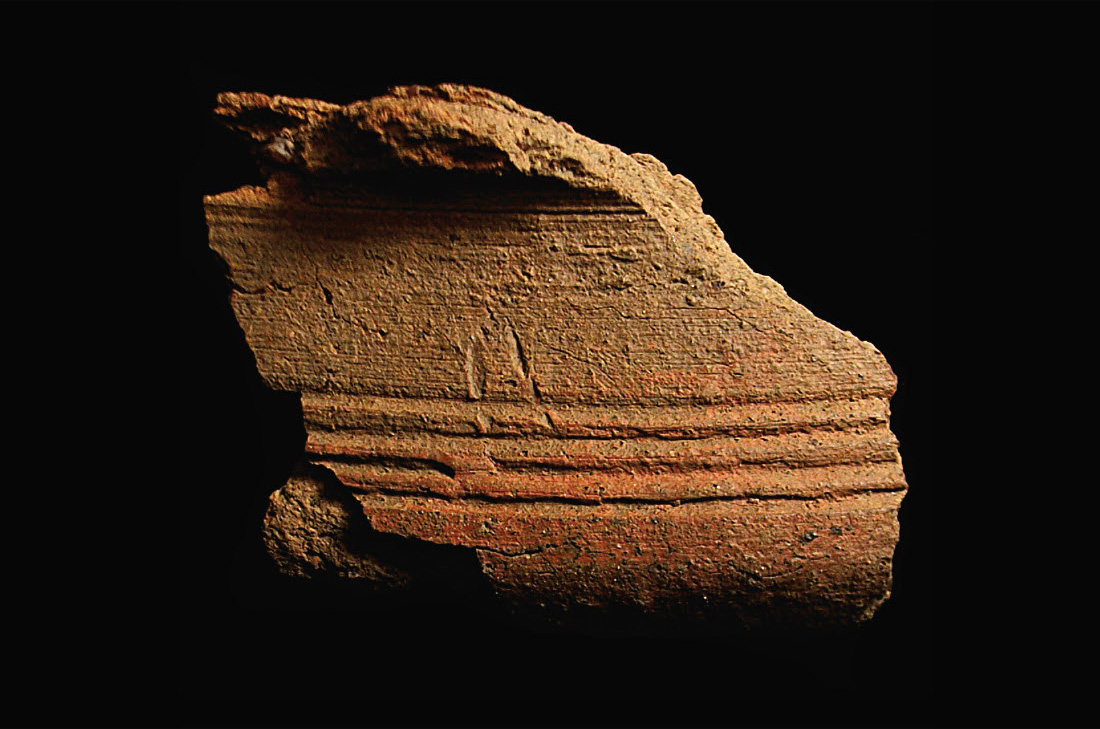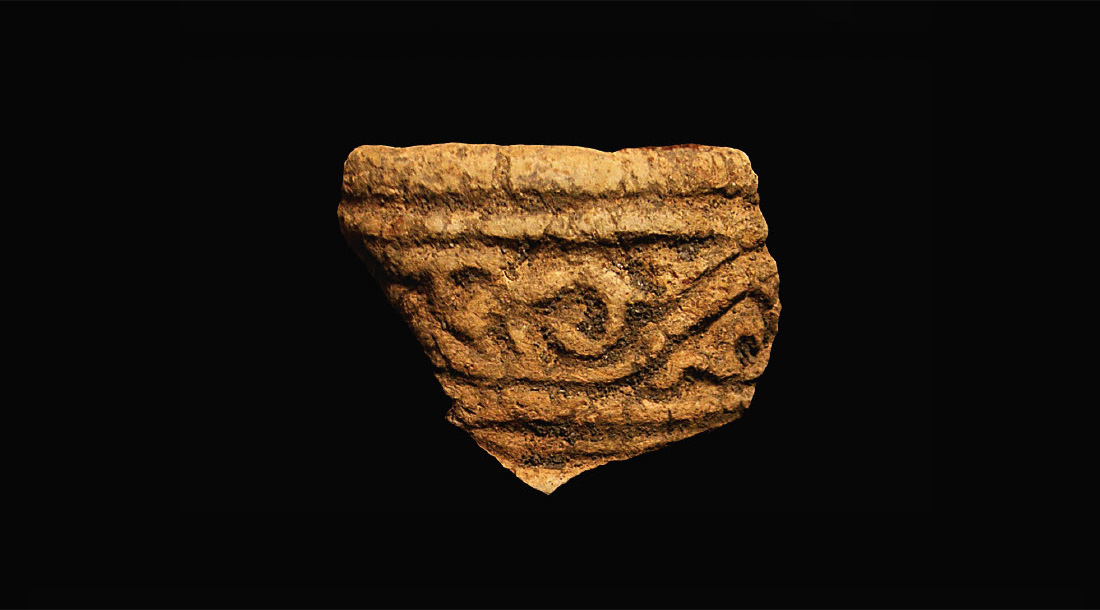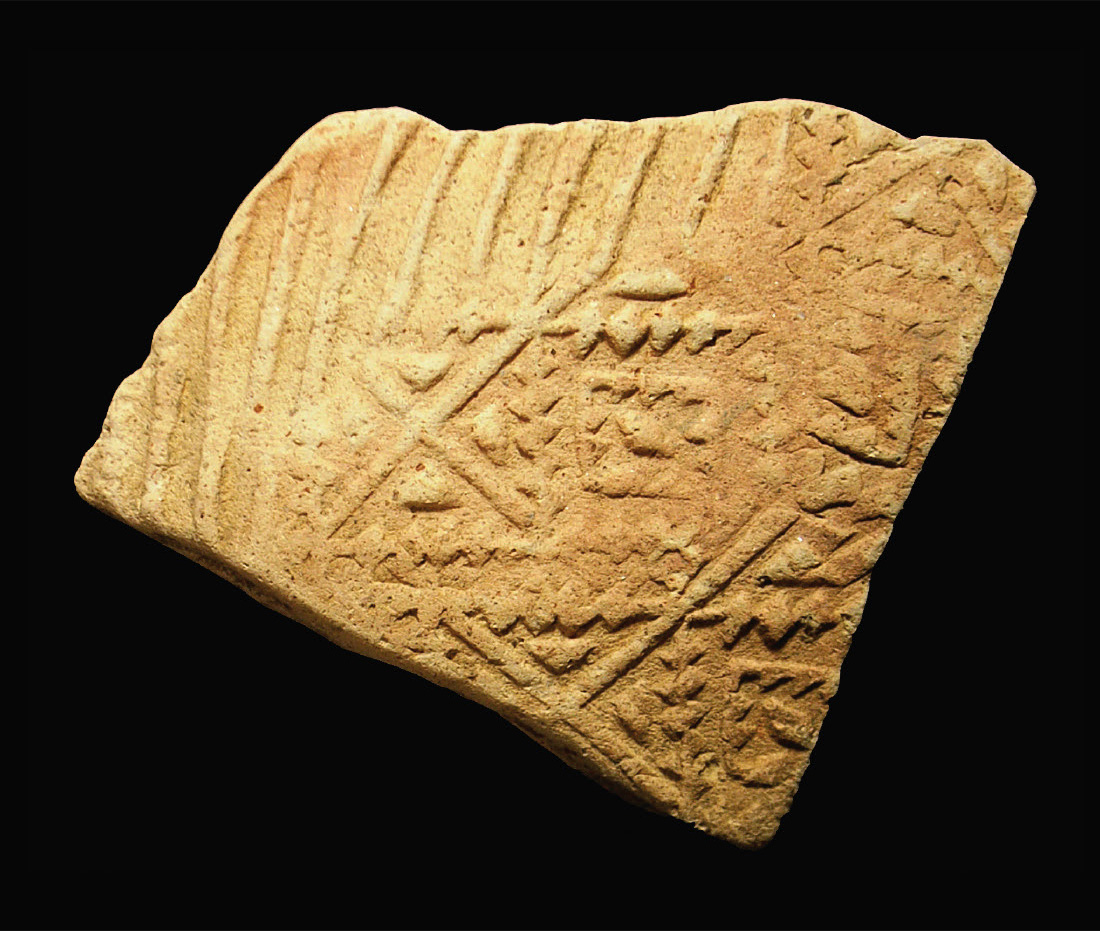The decorated earthenware from the National Gallery Singapore site
<p>Earthenware decorations are underexplored in Southeast Asia. This makes the earthenware discovered at the site of the National Gallery Singapore (NGS) in 2009 all the more exciting. These artefacts, weighing about 32 kilograms, were one of the largest haul of ceramic from the site. By identifying the different types of decoration, production techniques, and socio-cultural representations, these artefacts allow archaeologists to make inferences into the lifeways of these inhabitants of 14<sup>th</sup> century Singapore.</p>
Most of the earthenware found in NGS were low-fired (400 to 900 degrees Celsius) clay vessels and likely served as utilitarian receptacles for cooking and storage purposes, and possibly as religious paraphernalia. Found mainly in the 14th century Temasek context, their widespread distribution at nine other nearby sites around NGS in the downtown Civil District of Singapore suggests that they played an important role in day-to-day activities.
One primary goal of my research is to form a classification typology. This is useful as a data set for inter-site comparisons which enable archaeologists to examine the evolution of pottery making cultures, and how it relates to socio-cultural interactions. Four attributes were used to form this classification typology.
The first – ‘Surface treatment’ – describes the physical qualities of the ornamentation and the type of intervention carried out by the potter on the surface of the clay. Within the archaeological context, decorations on earthenware are forms of ‘surface enhancements’ applied to the surface of the pottery during various stages of its production. This is done to amplify the appearance or functionality of the pot. To archaeologists, these can be important indicators of individual or group behavioural patterns such as artistic expression, cultural identity and beliefs, or simply as a form of maker’s mark or ergonomic feature.
A sample set of 585 pieces weighing 2,564 grams was analysed. The sample size mass is approximately 8% of the total earthenware assemblage. At NGS, an overwhelming 88% of the earthenware decorations were physically recessed. In other words, the majority of techniques used involved a degree of penetration and displacement of the moist clay (fig. 1). The remainder portion consisted of relief features created by adding (appliqué) and shaping the clay by hand. These are considered rare.
‘Operational action’, the second attribute, investigates the random tool or finger marks left behind by the potter(s). These physical gestures indicate the type of motor performance associated with production techniques (fig. 2). At NGS, impressing and incising were the most common action at 52% and 38% respectively. They were also responsible for all recessed decorations. The third attribute, ‘decoration’, is a description of the tool used and its related ‘operational action’. For example, out of a total of 23 types of decorations identified, carved-paddle-impressing (fig. 4) accounted for 46%. This particular tool is a hand held wooden paddle with a carved design on its working surface(s). It is struck repetitively around the surface of the pot, in unison with a supporting anvil held within the vessel. A textured imprint is normally produced (fig. 1). The second most numerous type of decoration is broadly incised concentric grooves found on the rims of the vessels. These range from one to five groove configurations. The remaining decorations are varied and uncommon. These included different forms of impressing, such as paddles that were bound with a variety of textured organic materials, stamping with an intricately carved tool (fig. 3), and puncture marks created with a single-point or dentate-tipped implement. These tools resembling a comb were also used to incise parallel lines (fig. 2).
The fourth attribute, ‘motif’, describes the primary visual elements of a decoration. A diverse assemblage of 75 motifs was identified at NGS, with most of these occurring as complex or simple geometric designs within the carved-paddle-impressed category. Common visual elements used consist of triangles, squares, zigzag and curvilinear lines, circles, and parallel dashes (fig. 4). Complex geometric designs are composed of hachured triangles laid in an alternating or linear configuration, herringbone pattern, and repetitive rectilinear spirals. Variations within these motifs are evident, which indicate that some potters might have shared a non-rigid expression of similar beliefs. Incised decorations are less elaborate, featuring borderlines, or unidentifiable curvilinear patterns. Appliqué designs are mostly plain bands going around the vessel but rare organic forms were also encountered.
The distribution of archaeological materials at NGS suggested that small households probably occupied the site. This would indicate the type of domestic environment in which this heterogeneous assemblage of decorations would have high visibility. The high frequency of geometric motifs produced by carve-paddle-impressing appears to place the pottery tradition found at NGS in context with the Bau-Malay pottery tradition hypothesised by Wilhelm G Solheim II. Solheim believed that this tradition could have formed as early as 1000 BCE, with strong similarities with the geometric pottery found in Southeastern China. It is believed that this particular pottery tradition occurred as early as 3,000 to 2,500 BCE. Although it is not clear if these decorations share the same meanings as those found at NGS, the antiquity of this form of aesthetic expression is apparent.
A version of this article was first published in NSC Highlights Issue #7 (Dec 2017 – Feb 2018)
Aaron Kao is a Research Officer at the Archaeology Unit, NSC, ISEAS – Yusof Ishak Institute, and a member of the Pulau Ubin project. He received his BA from the Royal Melbourne Institute of Technology and has a keen interest in pottery analysis and military history. As a part of the AU team he has excavated many sites in Singapore and Cambodia. aaron_kao@iseas.edu.sg



